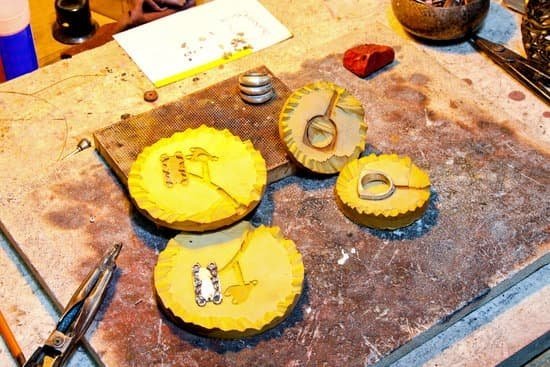Diamonds have long been revered for their beauty and elegance when adorning jewelry. However, their usefulness extends far beyond their traditional association with fashion. In this blog post, we will delve into the lesser-known uses of diamonds and explore how they are utilized in various industries and fields.
While diamonds may be thought of as delicate gemstones meant only to sparkle on a finger or necklace, they possess a unique hardness that sets them apart from other materials. This exceptional hardness makes diamonds valuable not only in the realm of aesthetics but also in numerous practical applications.
In this article, we will uncover the surprising ways diamonds are employed in industrial settings, such as cutting and grinding tools used in mining and construction. We will also delve into their significance in the medical field, where diamond-coated scalpels and syringe needles revolutionize surgical procedures by providing enhanced precision and durability.
Join us on this fascinating journey as we unveil the versatility of diamonds. From scientific research to high-end electronics, alternative energy sources to space exploration, and even environmental remediation, diamonds prove themselves to be indispensable assets. Discover the untapped potential of these extraordinary gemstones beyond their captivating allure in jewelry.
Industrial Applications
Introduction: Diamonds have long been associated with luxury and adornment in the form of jewelry. However, these precious gems are much more than just a sparkling accessory. Diamonds possess remarkable properties that make them invaluable in various industries and scientific fields. This section will explore the industrial applications of diamonds as cutting and grinding tools.
Industrial Applications: Diamonds have exceptional hardness, making them ideal for industrial use. In industries such as mining and construction, diamonds are extensively used as cutting and grinding tools due to their durability and ability to withstand high pressures. Diamond-embedded cutting blades, grinding wheels, and drill bits have revolutionized these sectors by offering unrivaled efficiency and precision.
Diamond-Embedded Cutting Blades
Diamond-embedded cutting blades have become essential tools in the construction industry. These blades consist of small synthetic diamond particles securely bonded to the blade’s surface. The diamonds act as abrasives, allowing the blades to effortlessly slice through hard materials such as concrete, ceramics, and stone. The use of diamond-embedded cutting blades minimizes downtime on construction sites, enhances worker safety, and reduces wastage.
Grinding Wheels
Diamond grinding wheels are widely used in various industries for precision grinding operations. These wheels efficiently remove unwanted material from surfaces while maintaining dimensional accuracy and surface quality. Due to their exceptional wear resistance, diamond grinding wheels have replaced traditional abrasive wheels in tasks such as sharpening tools, shaping metals, and polishing glass.
Drill Bits
Diamond drill bits are essential in drilling through tough materials such as rock formations or reinforced concrete. These bits incorporate tiny synthetic diamonds into their cutting edges or tips for increased hardness and resistance against wear. The use of diamond drill bits enables faster drilling speeds with less effort required, resulting in improved productivity in industries ranging from mining operations to oil well explorations.
The industrial applications of diamonds as cutting and grinding tools highlight their indispensability in various sectors. Whether it’s constructing buildings, shaping metals, or drilling through tough materials, diamonds provide unmatched durability and efficiency. The next section will delve into another intriguing use of diamonds: their invaluable contribution to the field of medicine.
Medical Advancements
Diamonds are widely admired for their beauty and value, often being associated with luxury jewelry. However, diamonds have a multitude of uses beyond being mere adornments. In this blog post, we will delve into the lesser-known applications of diamonds and their remarkable versatility in various industries, including the medical field.
Diamonds, with their exceptional hardness and durability, have found important applications in surgical procedures. The medical field relies on precision and reliability, which diamonds offer in abundance.
One significant use of diamonds in medicine is in the manufacturing of surgical tools. Diamond-coated scalpels are renowned for their exceptional sharpness and ability to make precise incisions. These scalpels offer enhanced cutting performance compared to traditional steel blades, resulting in reduced scarring and quicker healing times for patients.
In addition to scalpels, diamond coatings are also utilized on syringe needles to improve their effectiveness. The smooth surface provided by diamond coatings reduces friction during injections, resulting in less trauma to tissues and a more comfortable experience for patients. Furthermore, diamond-coated stents are used in cardiovascular procedures to increase durability and reduce the risk of complications.
Overall, the incorporation of diamonds into surgical tools elevates the level of precision and durability offered by these instruments. Surgeons can rely on diamond-embedded tools to perform intricate procedures with enhanced accuracy while minimizing patient discomfort.
| Application | Benefits |
|---|---|
| Diamond-coated scalpels | Enhanced cutting performance leading to reduced scarring and quicker healing times |
| Diamond-coated syringe needles | Reduced tissue trauma during injections for a more comfortable experience |
| Diamond-coated stents | Increased durability and reduced risk of complications in cardiovascular procedures |
Scientific Research
Diamonds are not just beautiful gemstones, they also have significant scientific value. In the field of scientific research, diamonds play a crucial role in understanding the Earth’s history and geological events that occurred millions of years ago. Scientists analyze diamonds to gain insights into deep-earth processes and to determine the ages of rocks and minerals. Here are some of the ways diamonds contribute to studying the Earth’s history.
One way scientists use diamonds is by studying their impurities and mineral inclusions. Diamonds form deep within the Earth’s mantle, where extreme pressure and temperature conditions cause other minerals and materials to get trapped inside them. These inclusions can provide valuable information about the chemical composition of ancient rocks and fluids that existed long before the formation of diamonds themselves.
Another important aspect of using diamonds for scientific research is their ability to preserve samples from ancient times. Diamonds are one of the oldest materials on Earth, dating back billions of years.
When scientists study a diamond, they can extract tiny samples called “diamond cubes” which still contain traces of carbon isotopes from different periods in Earth’s history. By analyzing these carbon isotopes, researchers can gain insights into past climatic conditions, changes in atmospheric composition, and even the evolution of life on our planet.
Additionally, diamonds have proven instrumental in providing evidence for ancient tectonic processes that shaped our planet’s surface. Scientists have found diamond crystals with unique structures that could only have formed under extreme pressure conditions during tectonic events like subduction or collision between large land masses. Studying these diamond crystals allows researchers to reconstruct past plate movements and better understand how continents formed and broke apart throughout Earth’s history.
High-End Electronics
Diamond Transistors
One of the most promising applications of diamonds in high-end electronics is in the development of diamond transistors. Transistors are essential components of electronic devices, acting as switches that control the flow of electrical signals.
The unique properties of diamonds, such as their excellent thermal conductivity and superior electrical properties, make them ideal materials for high-power and high-frequency transistors. Diamond transistors have the potential to revolutionize electronic devices by providing faster computing speeds, reduced power consumption, and improved reliability.
Heat Sinks
Another area where diamonds are making an impact in high-end electronics is in heat management. Heat sinks made from synthetic diamond materials are highly effective at dissipating heat generated by electronic devices.
Due to their remarkable thermal conductivity, diamonds can efficiently transfer heat away from sensitive components, preventing overheating and improving overall device performance. Diamond-based heat sinks are particularly beneficial in power electronics applications that require efficient cooling of high-power components, such as electric vehicle batteries or computer processors.
Radiation-Detecting Sensors
Diamonds also play a critical role in radiation-detecting sensors used in advanced technology. Synthetic diamonds can be engineered to have radiation-sensitive defects known as color centers. These color centers exhibit unique responses when exposed to ionizing radiation, allowing them to accurately detect and measure radiation levels. This capability makes diamond-based sensors invaluable for various applications, including medical imaging equipment like positron emission tomography (PET) scanners and particle detectors used in nuclear research.
The use of diamonds in high-end electronics is continuously expanding as researchers discover new ways to harness the exceptional properties of these precious gemstones for technological advancements. From revolutionizing transistor technology to improving heat management and enabling precise radiation detection, diamonds are enhancing the capabilities and performance of electronic devices across various industries. With further research and innovation, the potential future applications for diamonds in electronics are bound to be even more remarkable.
Alternative Energy Sources
Diamonds are not only valuable for their beauty and rarity, but they also have significant potential in various non-jewelry applications. One emerging field where diamonds are finding purpose is alternative energy sources. With the increasing demand for clean and renewable energy technologies, diamonds are being utilized to enhance efficiency and durability in systems such as solar power and fuel cells.
1. Solar Power:
Diamonds play a crucial role in improving the efficiency of solar panels. By incorporating diamond materials into the construction of solar cells, researchers have been able to enhance their electrical conductivity and increase their resistance to heat. This allows solar panels to convert sunlight into electricity more efficiently, making them a viable option for generating green energy on a larger scale.
2. Fuel Cells:
Fuel cells are devices that convert chemical energy into electricity through a chemical reaction involving hydrogen and oxygen. Diamonds can significantly contribute to the development of more efficient fuel cells by acting as ultra-thin layers of protection. These diamond coatings can mitigate issues such as corrosion and extend the lifetime of fuel cell components, resulting in improved performance and increased durability.
3. Energy Storage:
Another area where diamonds show promise is energy storage technology. Researchers have been exploring the use of diamond electrodes in supercapacitors, which store and discharge electrical energy quickly. The exceptional thermal conductivity and stability of diamonds make them ideal for enhancing the performance and lifespan of supercapacitors, contributing to advancements in energy storage solutions.
Incorporating diamonds into alternative energy technologies not only improves their efficiency but also increases their longevity, making them more sustainable options for meeting our energy needs. As research in this field continues, scientists aim to further harness the unique properties of diamonds to optimize renewable energy systems for a greener future.
Astronomical Applications
Diamonds have long been associated with luxury and glamour in the form of jewelry, but their applications extend far beyond adornment. In the field of space exploration, diamonds play a crucial role in various astronomical applications. From satellite lenses to telescopes, diamonds are used in cutting-edge technology that aids in studying distant galaxies and cosmic radiation.
One key area where diamonds are utilized is in the construction of satellite lenses. The unique properties of diamonds make them ideal for this purpose. Diamonds have exceptional hardness, which allows them to withstand the harsh conditions of space and maintain their integrity over time. Additionally, the optical properties of diamonds, such as their high refractive index and transparency, make them valuable for capturing and transmitting clear images from space.
Telescopes also benefit from the use of diamonds. As astronomers strive to observe faint celestial objects or study distant phenomena, they require telescopes with high optical precision. Diamond lenses aid in achieving this precision by minimizing aberrations and improving image quality. Moreover, diamonds have superior thermal conductivity, reducing temperature fluctuations that can affect telescope performance.
In addition to aiding observation efforts, diamonds also contribute to understanding cosmic radiation. Cosmic radiation presents significant challenges for astronauts during space missions as it can potentially damage electronic systems and harm human health. By utilizing diamond-based sensors, scientists can better measure and analyze this radiation to develop effective shielding techniques for astronauts.
The versatility of diamonds extends far beyond their traditional association with jewelry. In the realm of space exploration, diamonds serve critical functions by enabling clearer observations through satellite lenses and telescopes while providing important insights into cosmic radiation levels. As our understanding of the universe expands, so too does the potential for future applications of these remarkable gemstones in space exploration technologies.
| Astronomical Applications | Diamonds in Space Exploration |
|---|---|
| Satellite Lenses | Diamonds with exceptional hardness and optical properties are used in the construction of satellite lenses, allowing for clear image capture and transmission from space. |
| Telescopes | Diamond lenses in telescopes minimize aberrations, improve image quality, and mitigate temperature fluctuations caused by the thermal conductivity of diamonds. |
| Cosmic Radiation Measurement | Diamond-based sensors aid scientists in accurately measuring and analyzing cosmic radiation, leading to the development of effective shielding techniques within the field of space exploration. |
Environmental Impact
Diamonds, known for their beauty and rarity, are not only used in jewelry but also have various applications beyond the world of fashion. One such application is in environmental remediation, where diamonds can be utilized as tools to address pollution and achieve a cleaner environment. This section explores how diamonds can contribute to environmental clean-up efforts and promote sustainability.
One area where diamonds can make a significant impact is in water filtration. Diamond membranes, with their unique properties, have the potential to enhance the efficiency and effectiveness of water treatment processes. These membranes can selectively remove impurities, contaminants, and microorganisms from water, providing clean and safe drinking water for communities. By incorporating diamonds into filtration systems, we can improve access to clean water, thus safeguarding public health.
In addition to water filtration, diamonds can also be used in air purification systems. Diamond-based catalysts have shown promise in breaking down harmful pollutants like nitrogen oxides (NOx) and volatile organic compounds (VOCs). With these catalysts integrated into air purification devices or industrial exhaust systems, diamonds can help reduce emissions and improve the quality of air we breathe. This innovation paves the way for greener industries that prioritize sustainability and reduce their environmental impact.
Furthermore, the use of diamond-based technologies extends beyond conventional pollution remediation methods. For instance, researchers are exploring the feasibility of using diamonds to capture carbon dioxide (CO2) emissions from power plants or industrial processes before they are released into the atmosphere. By developing diamond materials that efficiently capture CO2 molecules, we can mitigate climate change by reducing greenhouse gas emissions.
Conclusion
In conclusion, diamonds are not just beautiful gemstones used for jewelry but have a wide range of practical applications in various industries. From industrial cutting and grinding tools to medical advancements in surgical procedures, diamonds have proven their worth in enhancing precision and durability. Moreover, diamonds play a crucial role in scientific research by providing valuable insights into the Earth’s history and deep-earth processes.
The versatility of diamonds is further exemplified in their use in high-end electronics, where they enhance technology by enabling advanced electronic components and radiation-detecting sensors. Additionally, diamonds have a potential future role in clean energy technologies, such as solar power and fuel cells, where their efficiency and durability can significantly improve renewable energy systems.
In the field of space exploration, diamonds find applications in constructing satellite lenses and telescopes, allowing us to study distant galaxies and cosmic radiation. Furthermore, diamonds can also be utilized for environmental remediation purposes, helping to purify water and air through diamond-based technologies that remove pollutants.
Despite their diverse applications discussed throughout this blog post, the enduring mystique and allure of diamonds remain both in jewelry and beyond. Diamonds continue to captivate us with their beauty while simultaneously revolutionizing industries with their exceptional properties.
As we delve deeper into understanding the full potential of diamonds, it is clear that there are still many untapped opportunities for this remarkable gemstone. Whether adorning our bodies or furthering technological advancements, diamonds hold immense value far beyond their traditional association with jewelry.
Frequently Asked Questions
What other things are diamonds used for?
Apart from their prominent use in jewelry, diamonds have a range of other applications. One important use is in industrial settings where their exceptional hardness makes them ideal for cutting and grinding tools. Diamond cutting blades are commonly used for precision cutting in industries like construction, mining, and gemstone processing.
Additionally, diamonds’ high thermal conductivity makes them valuable in electronics as heat sinks or window coatings for laser devices. Certain niche industries, such as optics or scientific research, also utilize synthetic diamonds due to their unique properties.
Do diamonds have any real use?
Although diamonds do not serve essential functions like water or food, they do possess real uses and value beyond aesthetics. The rarity and durability of diamonds make them a desirable store of wealth—a form of investment similar to gold or other precious commodities.
Moreover, diamonds carry deep symbolism and sentimentality in many cultures, becoming objects that mark significant life events such as engagements or anniversaries. While the practicality of diamonds may be subjective depending on perspective, their appeal lies in their cultural and emotional significance.
Is there an alternative to diamonds can something else be used in its place?
Yes, there are alternatives to natural diamonds that can be used instead. Lab-grown or synthetic diamonds have emerged as a viable substitute for natural ones in various applications. These man-made diamonds have nearly identical chemical and physical properties to natural ones but are produced through controlled processes in laboratories rather than being formed over millions of years beneath the Earth’s surface.
Synthetic diamonds are increasingly employed in industrial settings due to their comparable hardness and thermal conductivity at a lower cost than natural counterparts. Furthermore, alternative gemstones like cubic zirconia or moissanite provide alternatives to the flashy appearance of diamonds without the associated ethical concerns or high price tag.

Welcome to my jewelry blog! My name is Sarah and I am the owner of this blog.
I love making jewelry and sharing my creations with others.
So whether you’re someone who loves wearing jewelry yourself or simply enjoys learning about it, be sure to check out my blog for insightful posts on everything related to this exciting topic!





